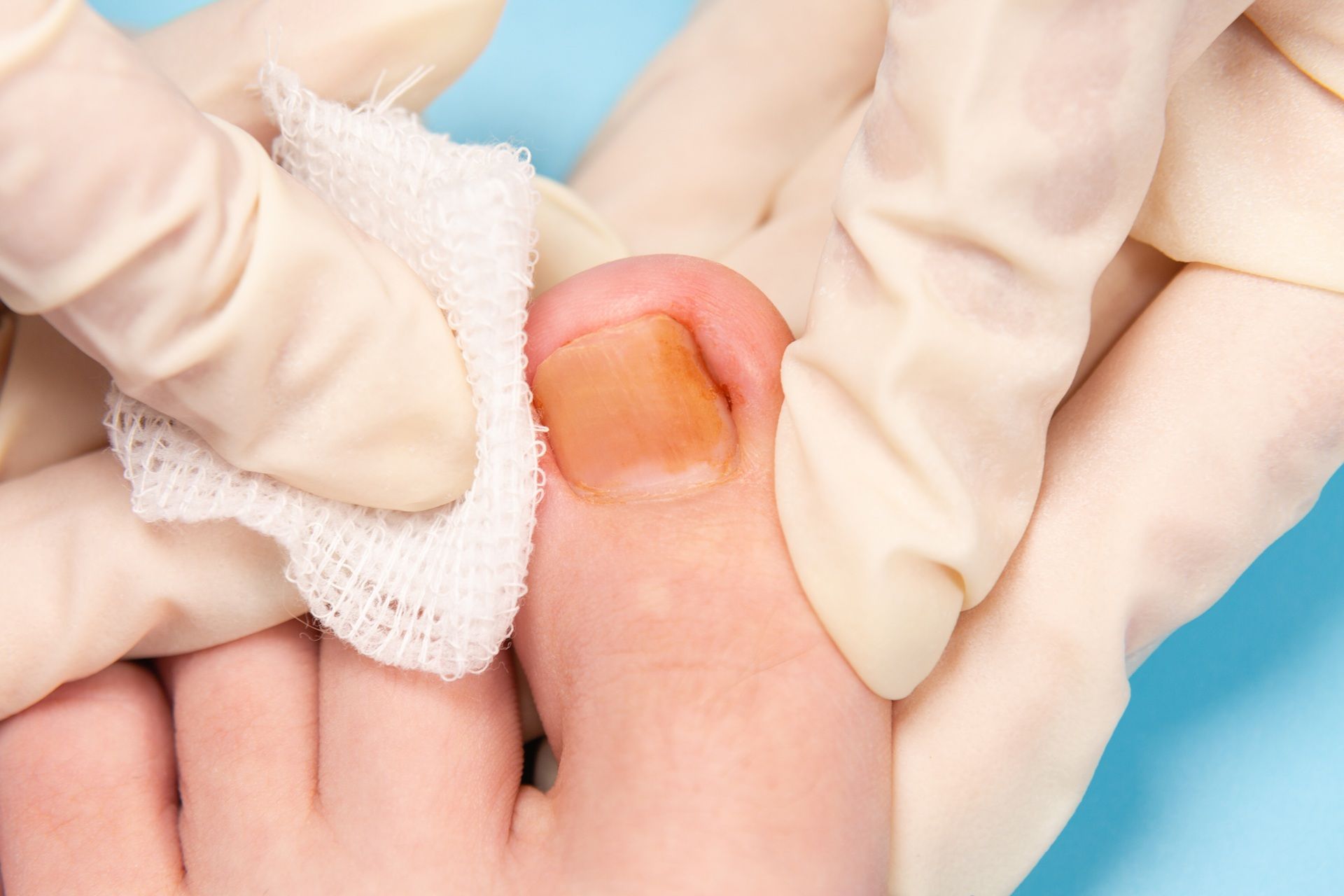Ingrown Toenails

Expert Ingrown Toenail Care
Safe and Effective Treatment for Ingrown Toenail Pain
Ingrown toenails occur when the edge or corner of a toenail begins to grow into the surrounding skin rather than over it. This condition most often affects the big toe, where pressure and friction are greatest, but it can occur on any toe. Early signs may include mild redness, swelling, and tenderness around the nail, but if the problem is ignored it can quickly worsen. The skin may become inflamed, painful to the touch, and in more advanced cases, infected. Ingrown toenails not only make it uncomfortable to walk, run, or wear shoes but can also lead to recurring issues if not properly treated. Seeking care early can help prevent complications and restore comfort.
Causes of Ingrown Toenails
Several factors may increase the risk of developing an ingrown toenail, including:
- Improper nail trimming, such as cutting toenails too short or rounding the edges
- Wearing tight or narrow shoes that crowd the toes
- Naturally curved toenails or hereditary factors
- Toe injuries, such as stubbing the toe or dropping a heavy object on it
- Repeated stress on the toes from sports or activity
Signs and Symptoms
Patients with ingrown toenails may experience:
- Pain and tenderness along one or both sides of the nail
- Redness, swelling, or warmth around the nail
- Drainage or infection in severe cases
- Difficulty walking or wearing shoes comfortably
Diagnosis and Treatment
A podiatrist can diagnose an ingrown toenail with a simple exam and recommend treatment based on its severity. Options may include:
- Lifting the nail edge and placing a splint or cotton underneath to guide growth
- Partially removing the toenail in more advanced cases
- Removing the nail and underlying tissue for recurring or severe infections
- Prescribing antibiotics if an infection is present
Prevention and Self-Care
You can reduce your risk of ingrown toenails by:
- Trimming nails straight across and avoiding cutting them too short
- Wearing properly fitted shoes with enough room for the toes
- Inspecting feet daily, especially if you have diabetes or circulation issues
- Avoiding self-treatment of severe or infected nails;
Special Considerations for Diabetic Patients
For individuals with diabetes, even minor foot problems like ingrown toenails can lead to serious complications. Professional care is strongly recommended to prevent infections and protect long-term foot health.
Start Your Journey to Wellness Today
Talk With Foot and Ankle Specialist Today!
If you are experiencing pain or swelling from an ingrown toenail, don’t wait for the condition to worsen. Contact our office to schedule an appointment and receive safe, effective treatment tailored to your needs.

